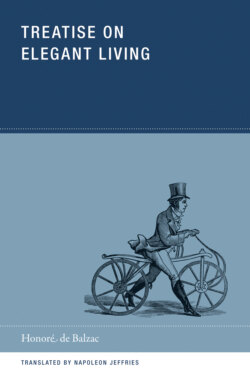Читать книгу Treatise on Elegant Living - Honoré de Balzac - Страница 8
На сайте Литреса книга снята с продажи.
NOTES
Оглавление1. Ellen Moers, The Dandy: Brummell to Beerbohm (New York: Viking Press, 1960), p. 121. This study remains, to my knowledge, the best historical overview of dandyism in any language, and the one that has most influenced my understanding of the subject.
2. Two figures most effectively and clearly represented in the works of the Marquis de Sade and J.-K. Huysmans, respectively. The libertine finds his archetype in the character of Dolmancé in Sade’s Philosophy in the Bedroom, the decadent in that of Des Esseintes in Huysmans’s Against the Grain.
3. Moers, The Dandy, p. 13.
4. Babrey d’Aurevilly, Dandyism, tr. Douglas Airslie (New York: PAJ Publishing Company, 1988), p. 64.
5. Baudelaire, The Painter of Modern Life and Other Essays (New York: Phaidon, 1964), p. 28.
6. This shift is nowhere better illustrated than in maxim xxxix of this treatise, Balzac’s direct denunciation of dandyism. Though there is a bit of an anxiety of influence in his labeling of dandyism as a “heresy,” Balzac’s denunciation is also what serves as the groundwork to the redefined dandyism of Barbey d’Aurevilly and Baudelaire.
7. Quoted in Moers, The Dandy, p. 129.
8. As paradoxical as the concept may seem, one could see something of a “democratic dandyism” in a work like the 1883 polemic, The Right to Be Lazy, by Karl Marx’s son-in-law, Paul Lafargue.
9. It is the same contradiction that arises with a number of related philosophies: it is impossible to envision, for example, a society of overmen in Nietzsche’s philosophy, or a society of libertines in Sade’s dark and inverted utopia.
10. It was Lavater who gave rise to the influential pseudoscience of phrenology that was still considered legitimate when Balzac was writing this treatise, and that would not be officially debunked until several years later in the late 1830s. Its influence, however, would continue well beyond that.
